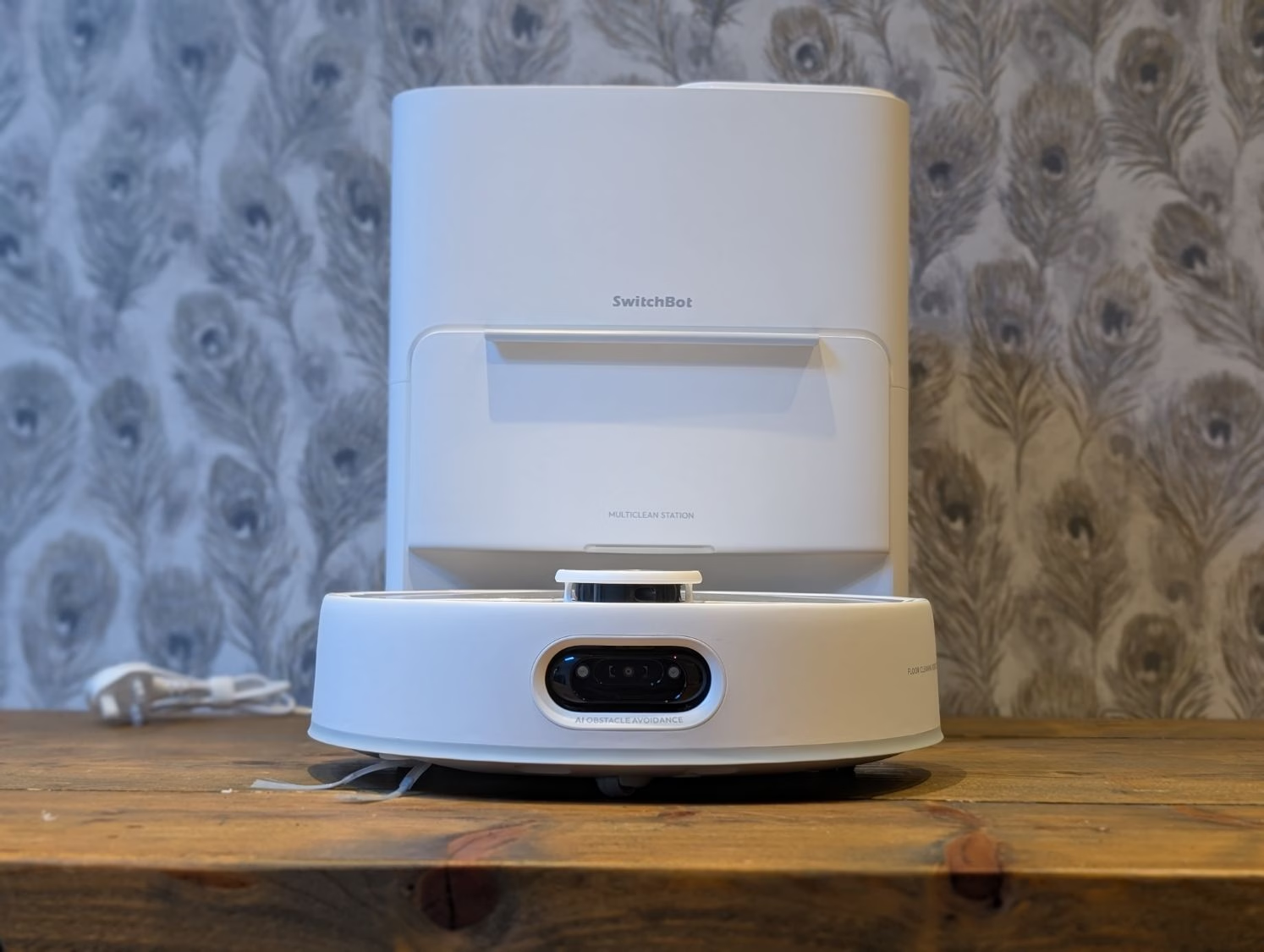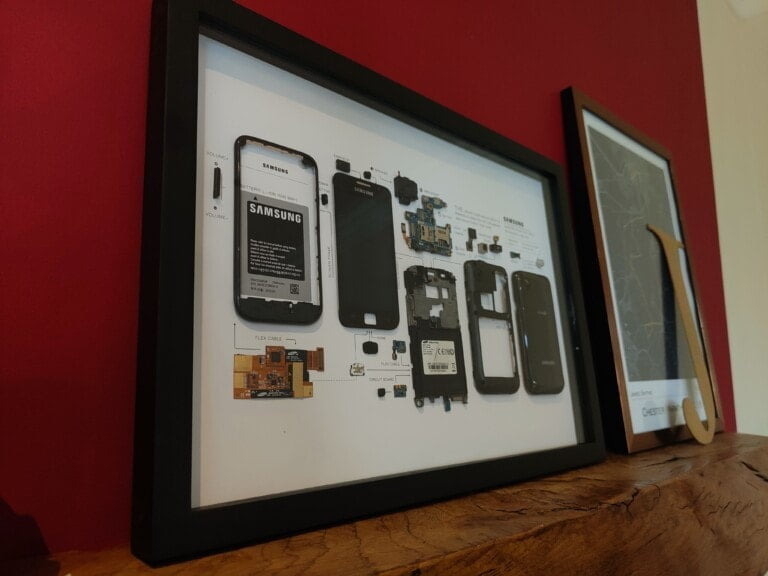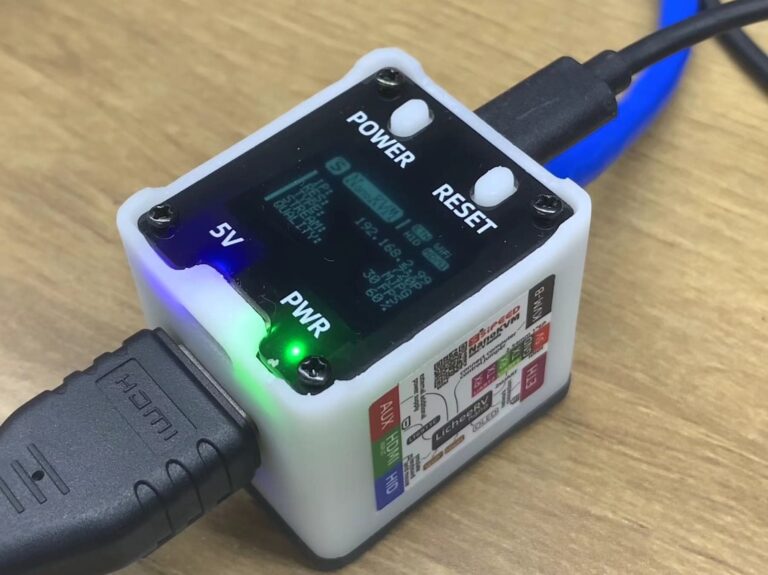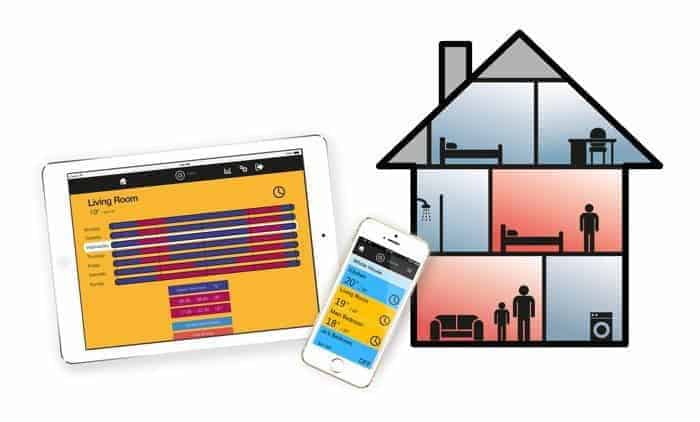Any links to online stores should be assumed to be affiliates. The company or PR agency provides all or most review samples. They have no control over my content, and I provide my honest opinion.
SwitchBot S20 Robot Vacuum Cleaner with Mop Review
Summary
In my experience, the SwitchBot S20 hits almost all the marks for a modern robot cleaner, combining practical self-maintenance with robust day-to-day cleaning on hard floors. The auto-refill station—if it suits your plumbing—sets it apart as a genuinely low-maintenance choice for UK homes, but the regular version still holds its own thanks to the clever mop roller and solid navigation.
If automation and seamless integration with SwitchBot devices matters for your smart home, the S20 is an easy recommendation—just bear in mind Matter support and more advanced automation may require waiting. For anyone wanting the absolute deepest carpet cleaning or broader third-party compatibility right now, other brands may have a slight edge. Overall, at £600, the S20 offers sensible value with few significant compromises.
Overall
80%-
Overall - 80%80%
Pros
- Effective Mop Cleaning
- Excellent Mapping
- Powerful Suction
- Minimal Maintenance
- Comprehensive App Control
- Matter Support (Imminent):
- Good Value
Cons
- Not Class-Leading on Carpet
- Matter functionality remains an unknown
I find the robot vacuum/mop industry quite interesting. It reminds me of the early days of mobile phones, when we saw significant improvements in the technology over a short period of time, which has made writing about them more interesting than other niches like phones with barely incremental improvements each generation.
While iRobot Rooma launched many years ago back in 2002, it took a while for the market to heat up and affordable options to come to market.
The Eufy RoboVac 11 was one of my first robot vacuum reviews back in 2018, which was a basic robot vacuum with no mapping that would bounce around the walls of my kitchen.
Lidar and VSLAM mapping revolutionised everything, allowing robots to intelligently map your home. Then came auto-empty stations to reduce maintenance.
Many early models had mopping, but it was very basic gravity-fed addons, which I personally never used on the regular. In the past few years, all-in-one stations with water tanks have taken off automating the whole mopping process.
Last year, SwitchBot was the first company to launch a robot vacuum and mop that had an auto-fill and empty station that was plumbed into your water mains, allowing it to be almost completely maintenance-free for mopping.
Now, they have launched its successor, the S20.
Unfortunately, I don’t really have anywhere where I could connect the mop station to my plumbing, so I had to opt for the more traditional all-in-one base station with water tanks.
And with a price of £800, it has launched at a much lower price point than the older model.
SwitchBot S20 vs S10 Roboto Vacuum Specification
| Feature | SwitchBot S20 | SwitchBot S10 |
| Dimensions (Robot) | 365 × 365 × 115 mm | 365 × 365 × 115 mm |
| Weight (Robot) | 5.5 kg | Not specified, but similar size (ca. 5.5 kg) |
| Suction Power | 10,000 Pa | 6,500 Pa |
| Cleaning Modes | Vacuum, Vac & Mop, Vac the Mop | Vacuum, Mop, Vacuum & Mop |
| Downward Mop Pressure | 10 N (RevoRoll™ roller, 1 kg) | 10 N (RevoRoll™ roller) |
| Mop Scrubbing Speed | 300 reps/min | 300 reps/min |
| Base Station | MultiClean Station – auto-refill, drain, dust emptying, hot air drying | Dual Station: Auto-Empty & Dry Station, Water Station |
| Dust Bag Capacity (Station) | 4 L | 4 L |
| Mop Drying | 50°C hot air, 1–8 hr adjustable | Hot air drying, less than 3 hours |
| Water System | Auto water refill, auto draining, external tanks included | Auto water refill & draining, cleaning solution auto-dilution, plumbed/external tank option |
| Clean Water Tank Capacity | 2.5 L (external tank) | 2.5 L (external tank option) |
| Waste Water Tank Capacity | 2 L (external tank) | 2 L (external tank option) |
| Battery Capacity | 4000 mAh, 88.8 Wh | 4000 mAh |
| Maximum Runtime | Up to 150 min | Up to 140 min |
| Maximum Cleaning Area | 120 m² | 120 m² |
| Navigation | dToF LiDAR, AI camera obstacle avoidance | 360° LiDAR, AI obstacle avoidance |
| Carpet Support | Carpet detection, avoidance, anti-tangle brush | Carpet detection, avoidance, lifts mop, increases suction |
| Passable Obstacle Height | 20 mm | 20 mm |
| Auto-Empty Dustbin Interval | 90 days | 70 days |
| Control/Integration | SwitchBot app, Alexa, Google, Apple Watch | SwitchBot app, Alexa, Google, Siri, Matter |
| Noise (Cleaning) | 60–69 dB(A) | Vacuum: 66 dB(A), Mop: 62 dB(A) |
| Dustbin Capacity (Robot) | 310 mL | 310 mL |
| Self-cleaning Roller Mop | Yes, with downforce and backwash filtration | Yes, with self-cleaning and drying |
| Station Size | 380 × 223 × 460 mm (tank); 380 × 223 × 300 mm (auto-fill/drain) | 412 × 260 × 207 mm (Auto-Empty); 400 × 165 × 100 mm (Water Station) |
| Connectivity | Wi-Fi, App, Voice Assistant | Wi-Fi, App, Voice Assistant, Matter |
Features
RinseSync Technology: Self-Cleaning While Mopping
The standout feature here is what SwitchBot calls “RinseSync” – a four-step process that cleans the mop whilst it’s still working. The system wets, scrubs, squeezes, and drains the mop at 300 cycles per minute, applying 1kg of downward pressure. It’s an interesting approach that should theoretically prevent you from just spreading dirty water around your floors.
I’ve tested enough robot mops to know that most just drag grimy pads across your surfaces, so if this actually works as advertised, it could be quite useful. The proof will be in real-world testing, particularly on heavily soiled areas.
Navigation and Obstacle Avoidance
The S20 combines LiDAR SLAM with Position Sensitive Detector (PSD) technology and an AI camera system that reportedly recognises over 100 obstacle types. It can climb thresholds up to 20mm high and includes an automatic light for dark environments.
The multi-sensor approach is sensible – pure LiDAR struggles with transparent objects and low-lying obstacles, whilst camera-only systems can fail in poor lighting. Whether the AI obstacle recognition is genuinely useful or just marketing fluff remains to be seen.
Cleaning Performance Specifications
Suction power hits 10,000Pa, which matches some premium models. The dual anti-tangle system includes a V-shaped side brush and rubber main brush – both designed to reduce hair tangling, a perpetual problem with robot vacuums in homes with pets or long-haired occupants.
Battery life varies significantly depending on mode: 250 minutes in quiet vacuum-only mode down to just 70 minutes on maximum power with mopping. These figures seem realistic based on the 4,000mAh battery capacity.
Base Station Capabilities
Two base station options are available. The standard version includes 2.7L clean water and 2.5L waste water tanks, whilst the premium model connects directly to your home’s water supply for automatic refilling and drainage.
The base station provides 50°C hot air drying with 360-degree airflow – important for preventing mould and odours in damp mop materials. Dust disposal is rated for 90 days of hands-free operation with a 4L capacity bag.
Floor Type Adaptability
The S20 automatically adjusts behaviour based on floor type. On carpets, it lifts the mop 7mm and includes a wiper to remove excess moisture, whilst simultaneously boosting suction to the full 10,000Pa for deeper cleaning.
For hard floors, the system applies measured water flow and pressure for effective mopping without oversaturation. The carpet detection uses current sensing rather than optical methods, which should be more reliable.
Smart Home Integration
Matter 1.4 support is promised for late August or early September 2025, which should provide broad compatibility across smart home platforms. Apple Home users get section cleaning functionality, whilst the system also works with Google Home, Alexa, and the broader SwitchBot ecosystem.
The ability to customise cleaning plans for different areas and floor types through the app could prove useful for homes with mixed flooring materials.
Physical Specifications and Practicalities
At 365 x 365 x 115mm, the S20 is fairly standard sized for a premium robot vacuum. The base station measures 380 x 223 x 460mm for the water tank version, so you’ll need decent cupboard space or a utility area for installation.
Noise levels range from 60dB in quiet mode to 69dB at maximum power – comparable to most quality robot vacuums. The <4 hour charging time is reasonable for the battery capacity.
Unboxing / Design
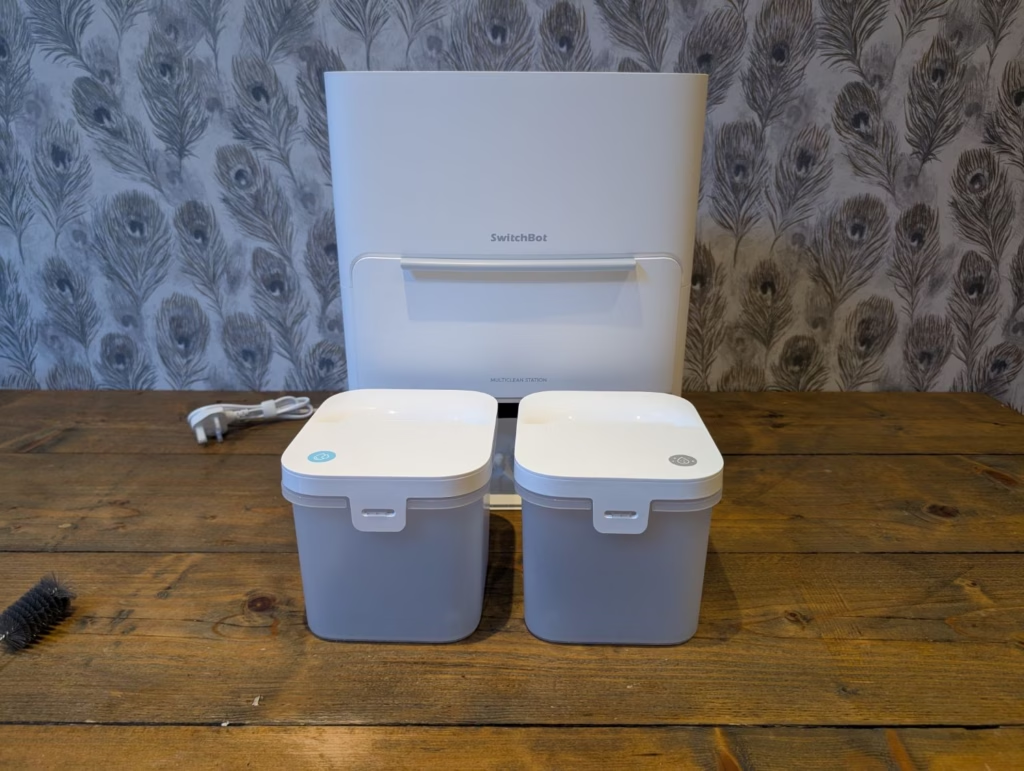
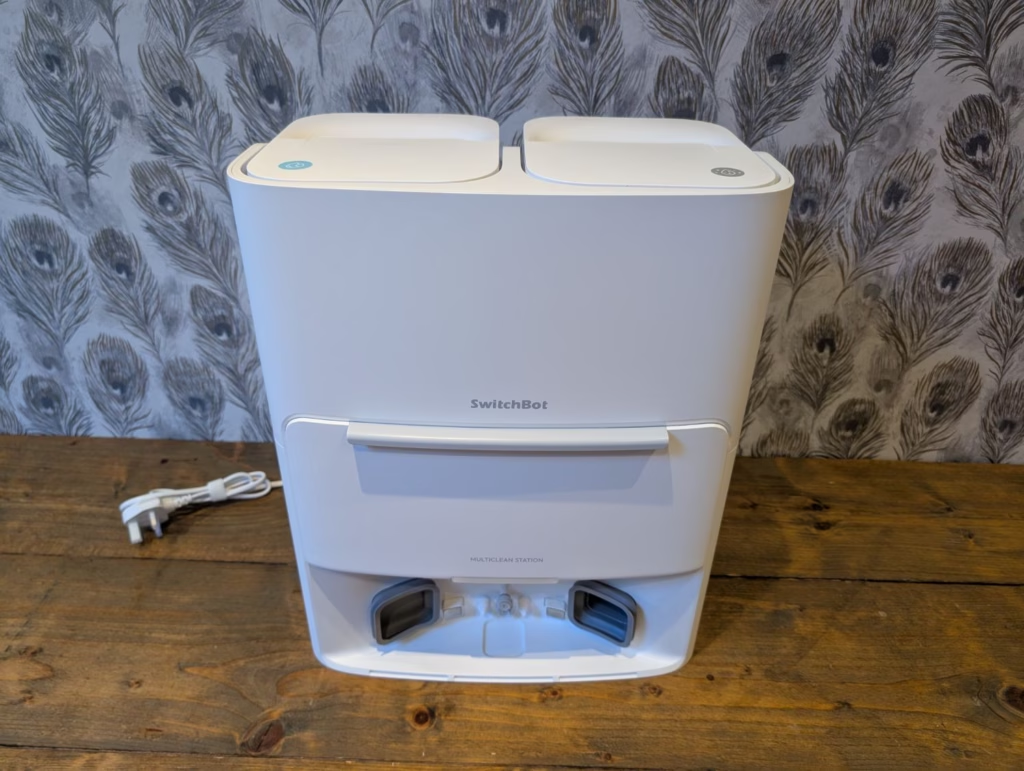
The SwitchBot S20 has a similar design to most robot vacuums with its feature set.
The robot itself is a typical design, you have the LiDAR module on top with the VSLAM cameras and LED lights on the front.
There is a removable cover which exposes the power switch and the small dustbin. Then on the base you have the roller mop, the main vacuum roller and a side sweeping brush.
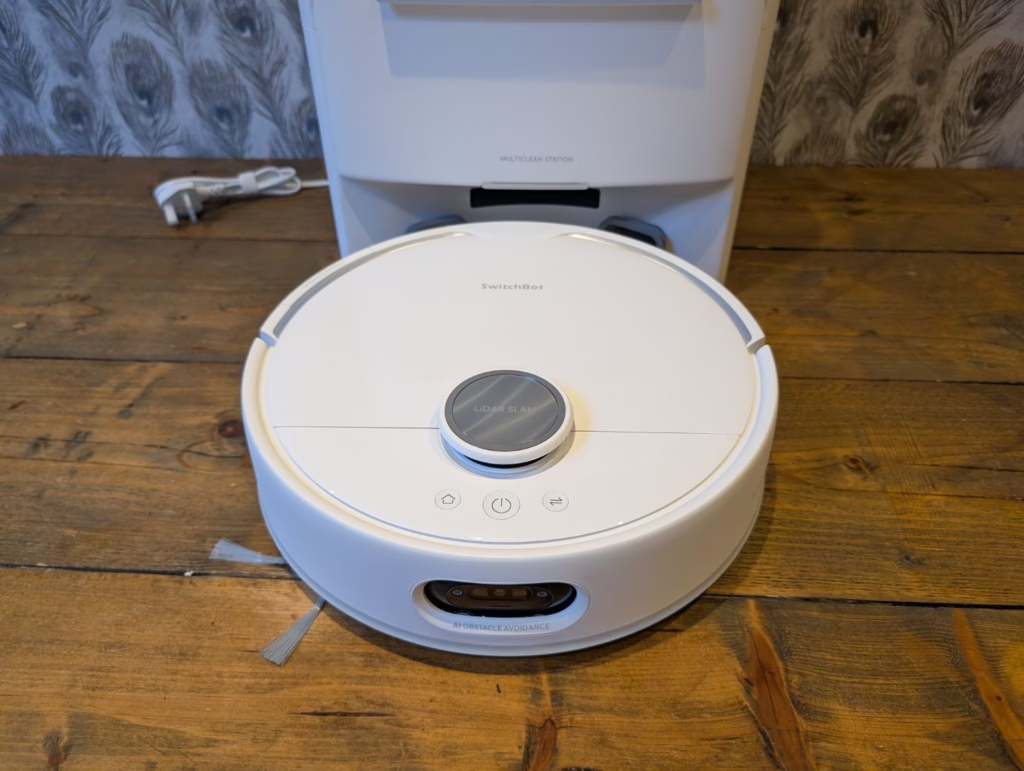
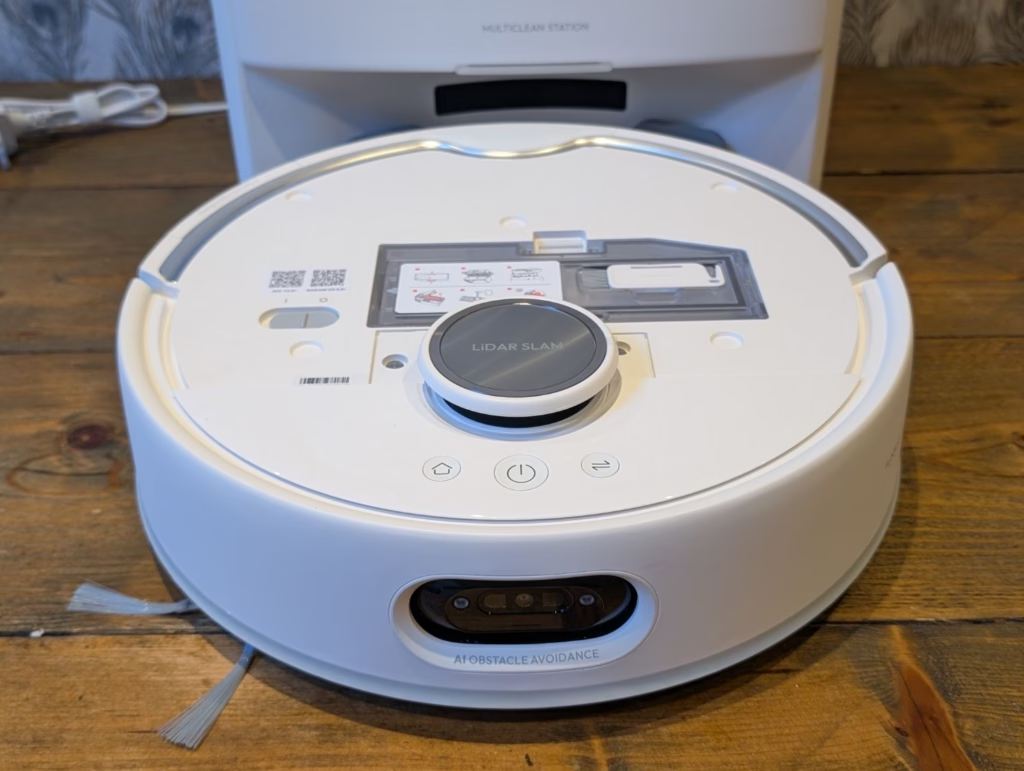
As I opted for the more typical water tank model, the all-in-one station is quite large with compartments for clean and dirty water. Underneath those is the compartment for the dust, and to the side of this is a small cubby hole containing a bottle of surface cleaner to be used with the mop.
One thing I noticed in my reviewer’s guide was that both S20 models are compatible with the older S10 water station. This could be useful if you are upgrading.
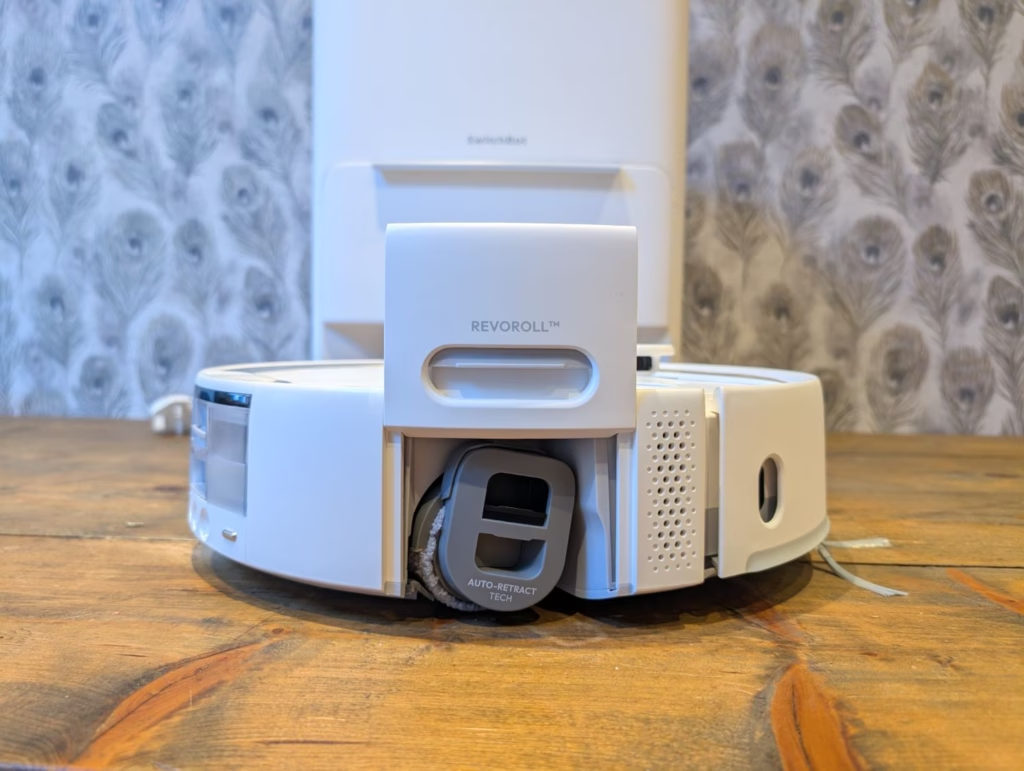
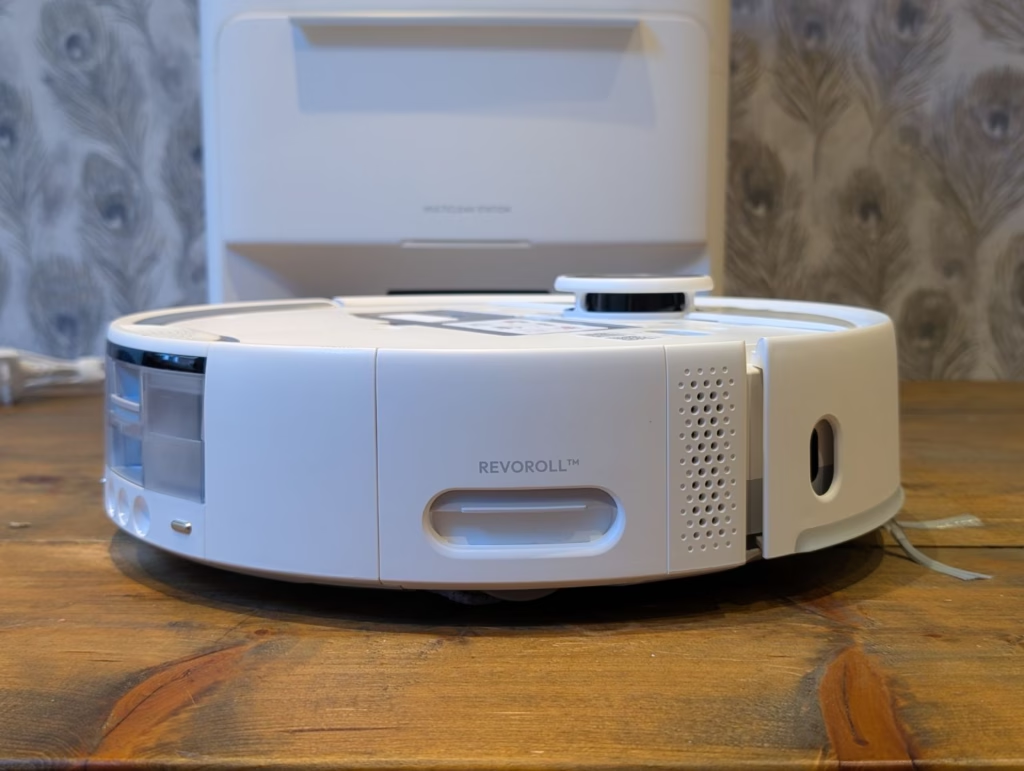
Set Up
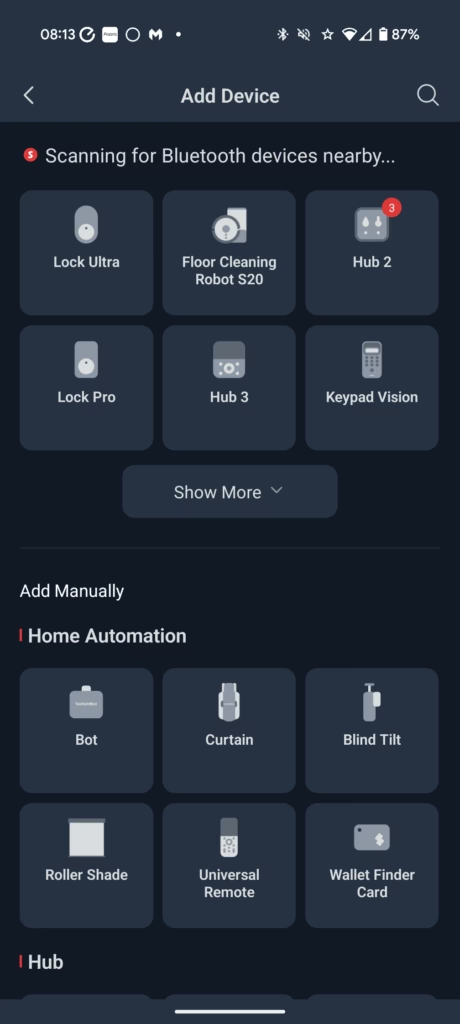
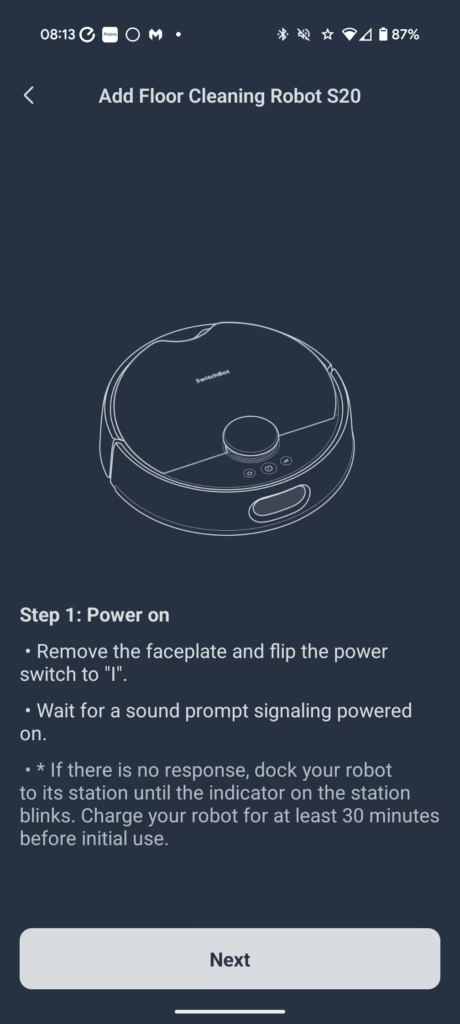
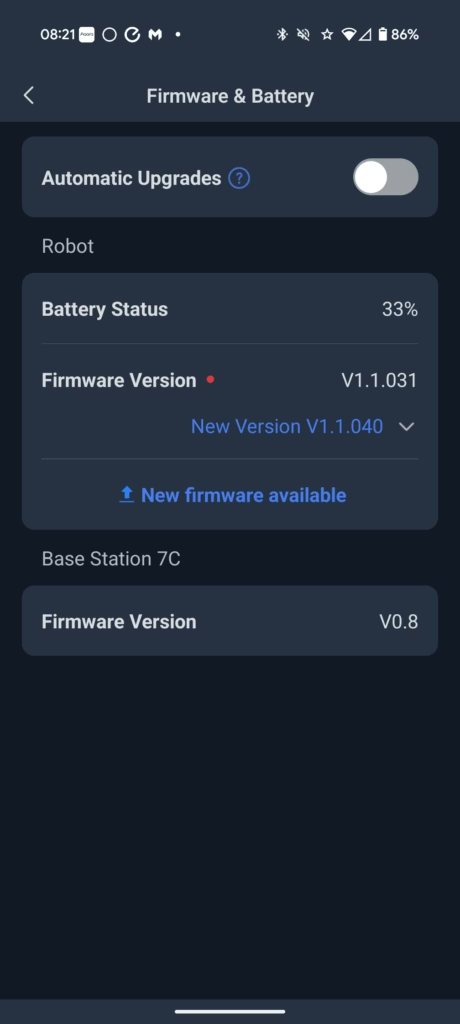
Setting up the S20 is relatively straightforward. Download the SwitchBot app, connect the base station and robot via WiFi and Bluetooth, and follow the in-app prompts. It is here that SwitchBot’s increasing focus on ecosystem ties in – if you already have their humidifiers, curtain openers, or sensors, everything links together.
The base station requires a firm, level surface with at least 0.5m clearance on both sides and 1m in front. For the plumbed version, you’ll need access to water supply and drainage connections, though installation videos are available through QR codes in the manual.
Initial charging takes around 4 hours, after which the robot automatically begins its first mapping run. The process is methodical and takes about an hour for a typical home, creating a detailed floor plan that forms the basis for all future cleaning routines.
SwitchBot App Interface and Settings
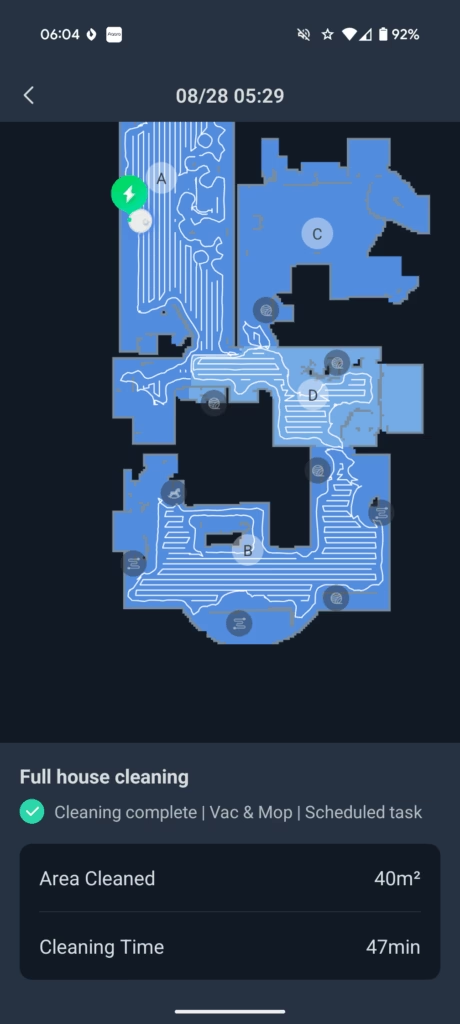
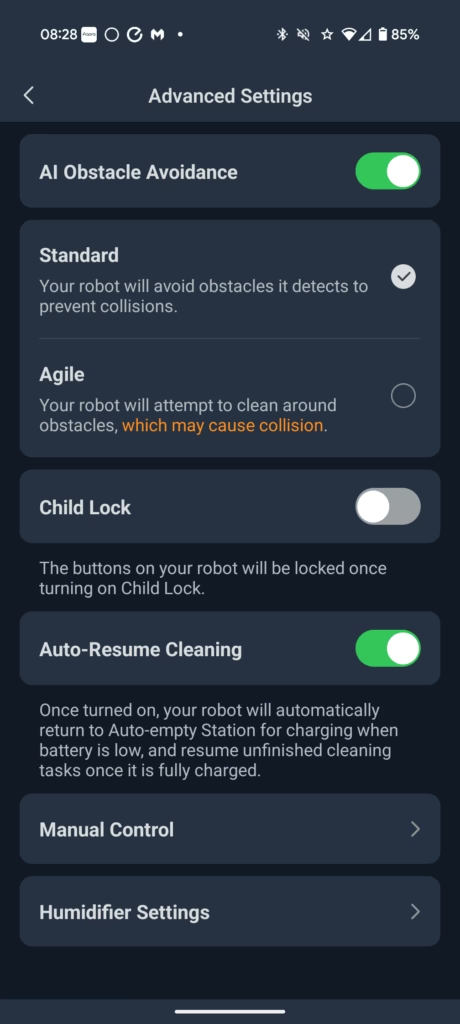
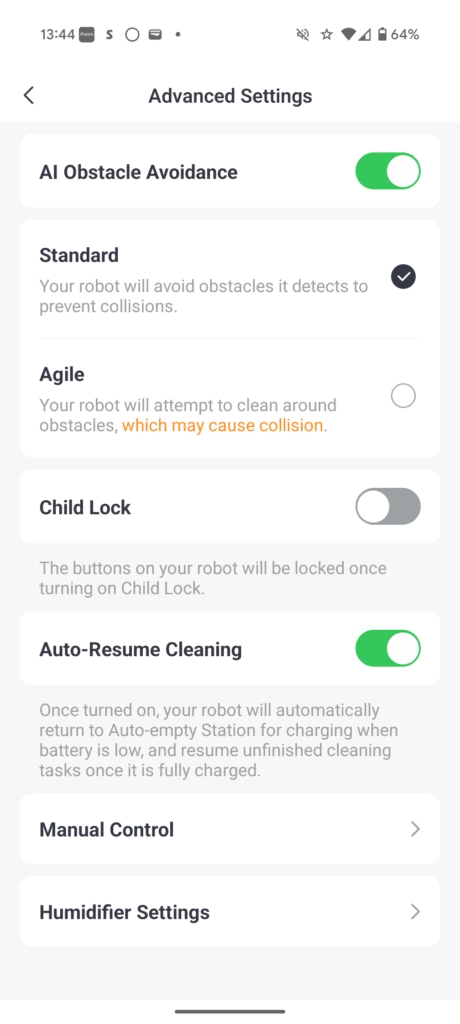
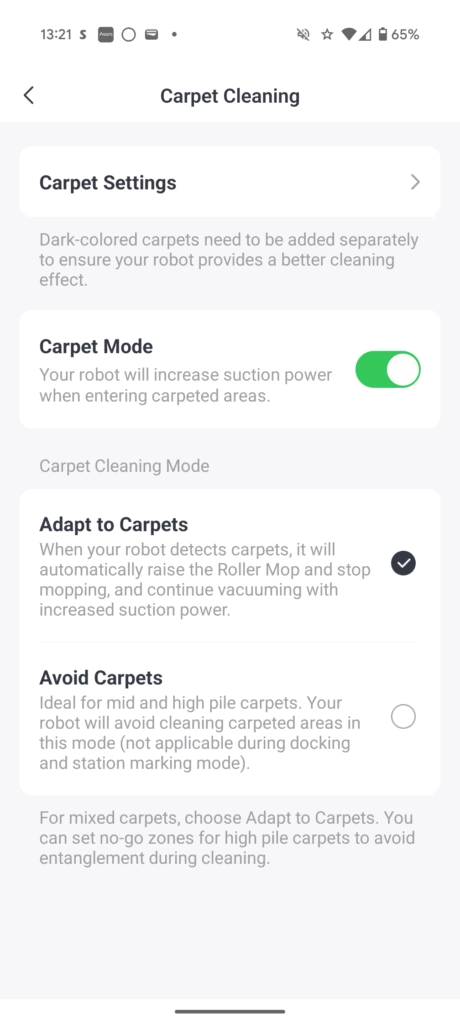
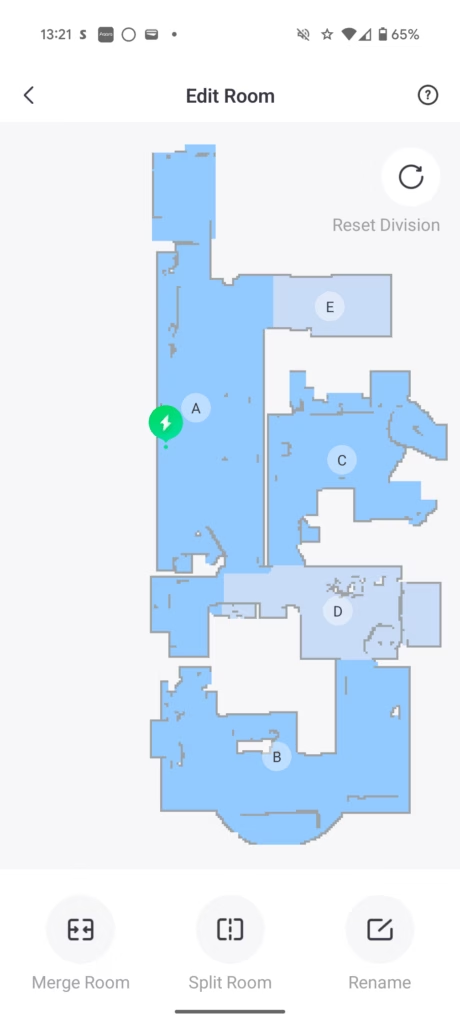
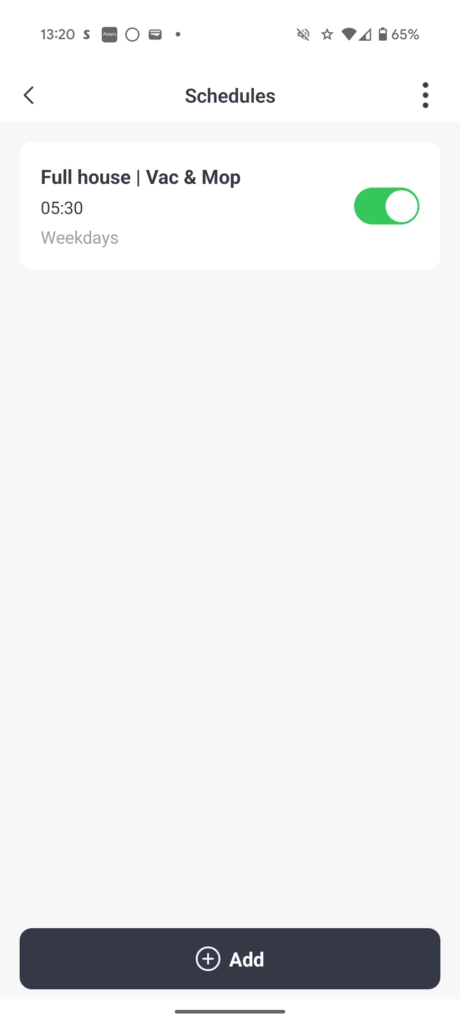
The SwitchBot app provides comprehensive control over the S20’s functions. The main interface displays a real-time map of your home with cleaning progress, battery status, and current mode clearly visible.
Room identification works well, automatically detecting and labelling different areas like “Kitchen,” “Living Room,” and “Bedroom.” You can rename rooms, merge or split areas, and set virtual no-go zones with simple finger gestures.
Cleaning customisation is extensive. Each room can have its own suction power level, water flow rate, and cleaning pattern. You can schedule different routines for different times – perhaps a quick vacuum in the morning and a full vacuum-and-mop session in the evening.
The app also provides detailed cleaning reports, showing coverage maps, time spent, area cleaned, and any obstacles encountered. This data helps you optimise cleaning schedules and identify problem areas.
Matter & Home Assistant
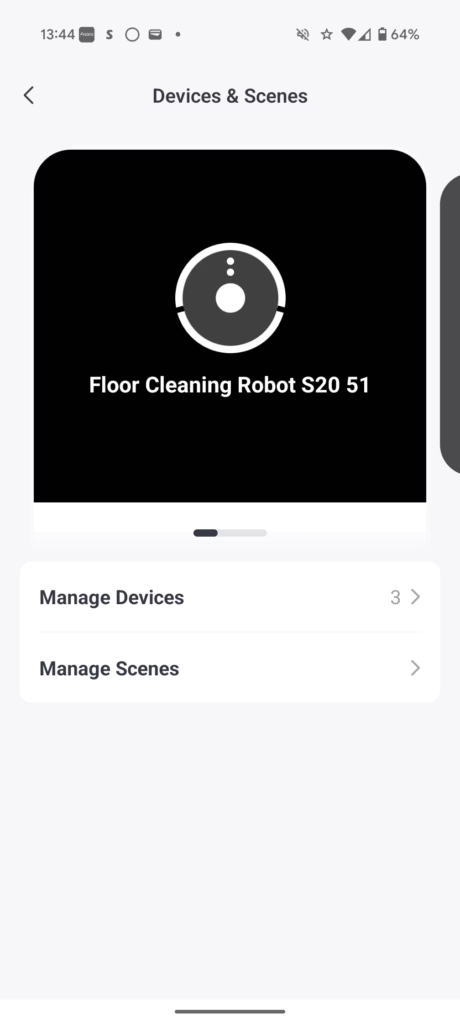
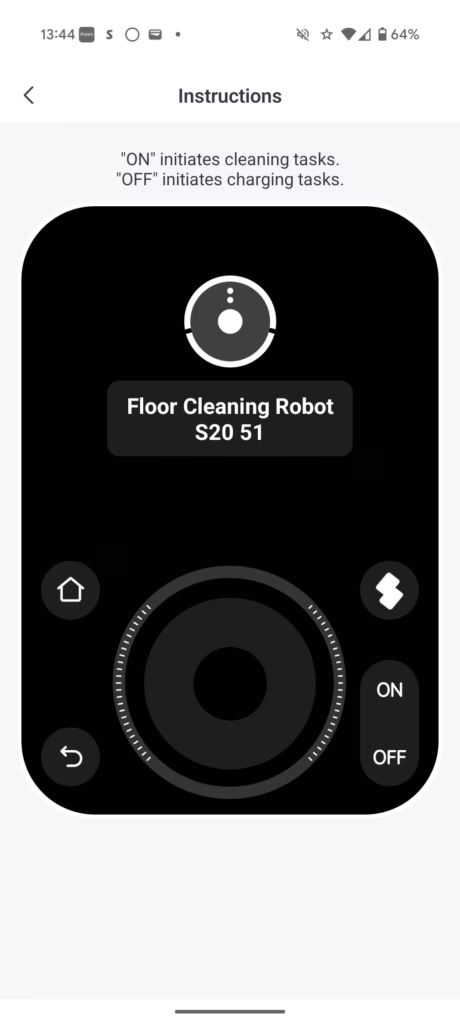
This robot features Matter 1.4 and can be integrated with third-party ecosystems such as Home Assistant, Google Home and Amazon Alexa.
Unfortunately, at the time of writing, this had not been enabled yet. I was able to add the S20 to the SwitchBot Hub 3 and this allows you to have some control of the robot vacuum from the hub, but it does not currently expose the S20 to Matter, and therefore Home Assistant.
Additionally, I tried the native SwtichBot Home Assistant integration to see if that would make a difference, but the S20 was still not available in HA.
I expect this will be enabled soon, and expect it to function a bit like the Yeedi S16 Plus, where there is limited functionality. Though, it will be interesting if this has more options for triggers/actions to allow you to create some automations.
Mapping Performance
The mapping performance has been excellent, which is also true for all the recent robot vacuums I have reviewed recently. This is mainly due to the combination of LiDAR and vision-based mapping.
The robot can apparently identify over 100 types of obstacles and has a built-in LED light for dark rooms.
When the robot completes a clean, you can look into the logs and view which objects it has identified.
In the month I used the S20, there was only one incident when the brush got tangled and I had to intervene. Considering I am quite messy and frequently have wires lying around on the floor, this is quite impressive.
The multi-floor mapping capability works as expected, storing up to five different floor plans. Moving between floors requires manually carrying the robot, but it quickly recognises its location and resumes appropriate cleaning patterns.
Mopping & Auto Refill / Empty Performance
The RinseSync mop system represents the S20’s main selling point, and after extensive testing, it largely delivers on its promises. The roller mop continuously self-cleans during operation, preventing the cross-contamination issues that plague traditional pad-based systems.
During mopping, you can actually hear the system working – every few seconds, there’s a brief mechanical noise as the mop undergoes its four-step cleaning cycle. Initially concerning, this sound becomes reassuring once you understand it indicates active self-maintenance.
The 1kg downward pressure provides effective scrubbing action on sealed hard floors. Sticky spills that would typically require manual pre-treatment came up reasonably well, though heavily caked-on dirt still benefits from traditional mopping first.
Water usage is conservative but effective. The 2.7L clean water tank typically lasted for about three full-house cleaning sessions in my 60m² ground floor before requiring refill. The waste water tank filled proportionally, though the collected liquid was noticeably darker than input water – evidence that the system actually removes dirt rather than just redistributing it.
The hot air drying system works well, completely drying the mop within 2-3 hours after cleaning. This prevents the musty odours that often develop with damp mop materials. The adjustable drying duration (1-8 hours) accommodates different climates and usage patterns.
One limitation: the cleaning solution must be SwitchBot’s proprietary formula. Third-party alternatives may damage the internal pumping system, according to the manual. Each 150ml bottle provides roughly 10-15 cleaning sessions, adding to running costs.
Vacuuming Performance
I didn’t review the older S10, but the S20 has had the suction power increased from 6500Pa to 10000Pa, which should give it much better performance. That is a little bit behind the Dreame L40 Ultra (11K )and much lower than the Yeedi M14 Plus (18k) and Yeedi S16 Plus (16.6K)
Real-world performance largely matches the specifications. On hard floors, the 10,000Pa suction easily handles daily debris – crumbs, dust, pet hair, and small particles disappear without multiple passes. The rubber brush design does reduce hair tangling significantly compared to bristle alternatives.
Carpet performance varies by pile height and density. Low-pile rugs and mats clean thoroughly, with the automatic suction boost providing noticeably better results than standard power. However, deep-pile carpets still challenge the system – embedded debris requires multiple passes or manual pre-vacuuming.
The anti-tangle side brush design works as advertised. During testing, I deliberately scattered hair ties and loose threads around the floor. The V-shaped design successfully flung most tangles clear, though occasional intervention was still required for particularly problematic items.
Edge cleaning performance is adequate but not exceptional. The side brush reaches into corners and along baseboards reasonably well, though manual touch-ups are sometimes needed for stubborn accumulated dirt.
Battery Life
The robot vacuum has a 4000mAh battery and claims a run time of 150 minutes in quiet mode, 130 minutes in standard, 100 minutes in strong and 70 minutes in max mode.
I have been using it in the default mode, and it typically reports the cleaned area as being 48 to 50m2 with a clean time consistently around 1 hour. So, the battery life has never been an issue, and even if I had a massive house, robot vacuums will return to base for a charge, then head back out to complete a clean.
Price and Alternative Options
While the embargo for this review has only just lifted, the SwitchBot S20 has been on Amazon for a couple of months.
The version I reviewed without the plumbing mains connection has an RRP of £800, and at the time of writing (30th of August), it was available for just £600.
The Autofill & Drain System version has the same RRP but is not on Amazon yet, and there are currently no discounts.
The older S10 is mains supplied by default and has an RRP of £1100. The SwitchBot website has a £600 off voucher, taking it to £500.
Competing options include:
- Roborock Qrevo Curv, which is available for £800, discounted from £1300. This is well reviewed, but it uses mop pads rather than a roller, which I find to be inferior.
- Roborock Qrevo is available for £430 with an RRP of £700. Similar to the above but lower spec overall.
- Eufy Omni C20 is available for £430 with an RRP of £600. Similar to the above, but lower spec again. Well reviewed
- Eufy E25 Omni is available for £800 with an RRP of £800. This is more advanced than the others with an extending sweeping arm and a roller mop. It has a very high suction power.
- Eufy E28 Omni, which has an RRP of £999 and no current discounts. This is similar to the above, but the water tank is detachable and can be used as a portable deep cleaner for spills.
- Dreame X50 Ultra has an RRP of £1200 and is available for £1000. This has a unique ability to climb steep 6cm thresholds. It uses mop pads but has the advantage of being able to extend the mop out to get into crevices, as well as a dual brush system for better cleaning.
- Dreame L50 Pro Ultra is available for £850 with an RRP of £900 and can be used with mains water or just the self-contained water tanks.
Overall
The water tank version of the SwitchBot S20 is a solid robot vacuum with all the features most people would likely want, and it comes at a competitive price point.
Not really a criticism, but there are a lot of similar products on the market at good price points, so it perhaps doesn’t stand out from the crowd other than having Matter support at some point in the future.
If you already have SwitchBot products, then this is an easy recommendation, as I find it best to keep as many products under one ecosystem as possible.
While I haven’t used it myself, the auto-fill and drain model is a much more appealing model as it has very few competing options and it is more affordable than the options from other brands.
The RinseSync technology works as advertised, providing genuinely cleaner floors compared to basic mop systems. Combined with solid build quality and comprehensive app control, the S20 represents good value at current pricing.
For households seeking reliable automated cleaning with minimal intervention, the S20 delivers. The system isn’t perfect, but it successfully handles the majority of daily cleaning tasks while requiring only weekly maintenance attention.
The £600 street price makes it particularly attractive compared to premium alternatives that cost £200-400 more for similar functionality. At this price point, the S20 offers excellent value for money in the crowded robot vacuum market.
SwitchBot S20 Robot Vacuum Cleaner with Mop Review
Summary
In my experience, the SwitchBot S20 hits almost all the marks for a modern robot cleaner, combining practical self-maintenance with robust day-to-day cleaning on hard floors. The auto-refill station—if it suits your plumbing—sets it apart as a genuinely low-maintenance choice for UK homes, but the regular version still holds its own thanks to the clever mop roller and solid navigation.
If automation and seamless integration with SwitchBot devices matters for your smart home, the S20 is an easy recommendation—just bear in mind Matter support and more advanced automation may require waiting. For anyone wanting the absolute deepest carpet cleaning or broader third-party compatibility right now, other brands may have a slight edge. Overall, at £600, the S20 offers sensible value with few significant compromises.
Overall
80%-
Overall - 80%80%
Pros
- Effective Mop Cleaning
- Excellent Mapping
- Powerful Suction
- Minimal Maintenance
- Comprehensive App Control
- Matter Support (Imminent):
- Good Value
Cons
- Not Class-Leading on Carpet
- Matter functionality remains an unknown

